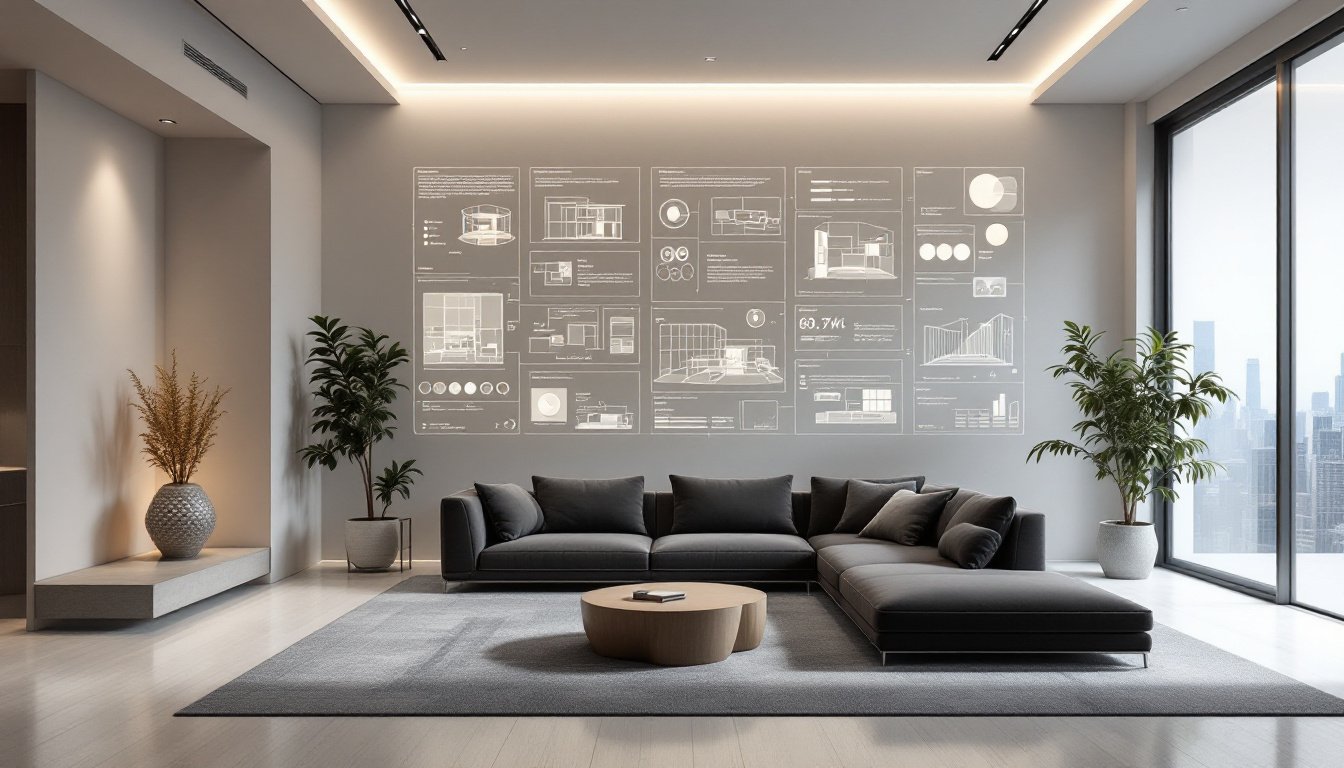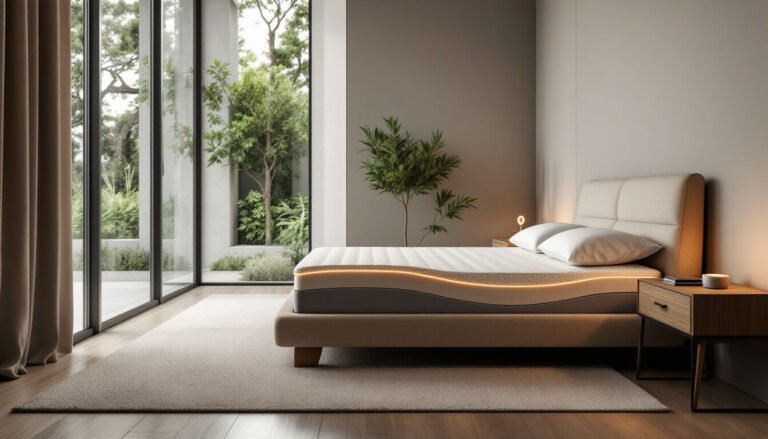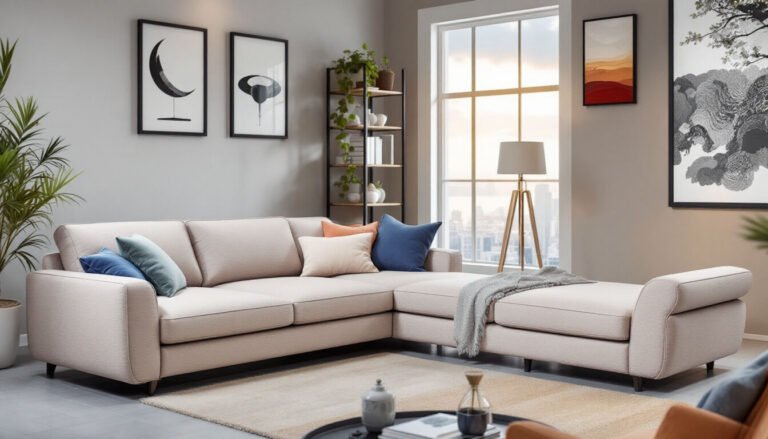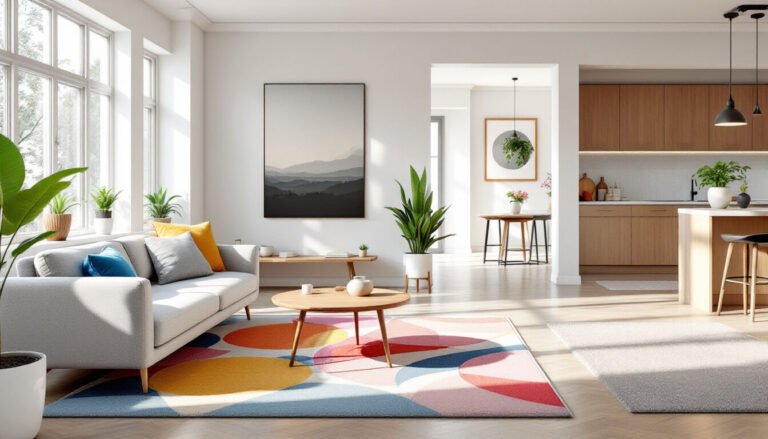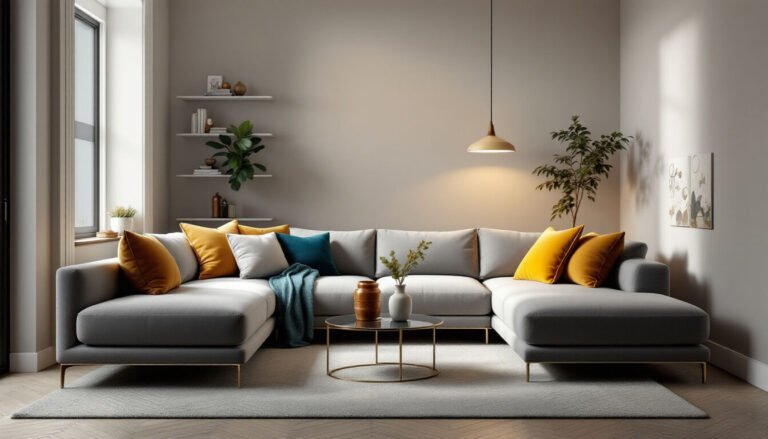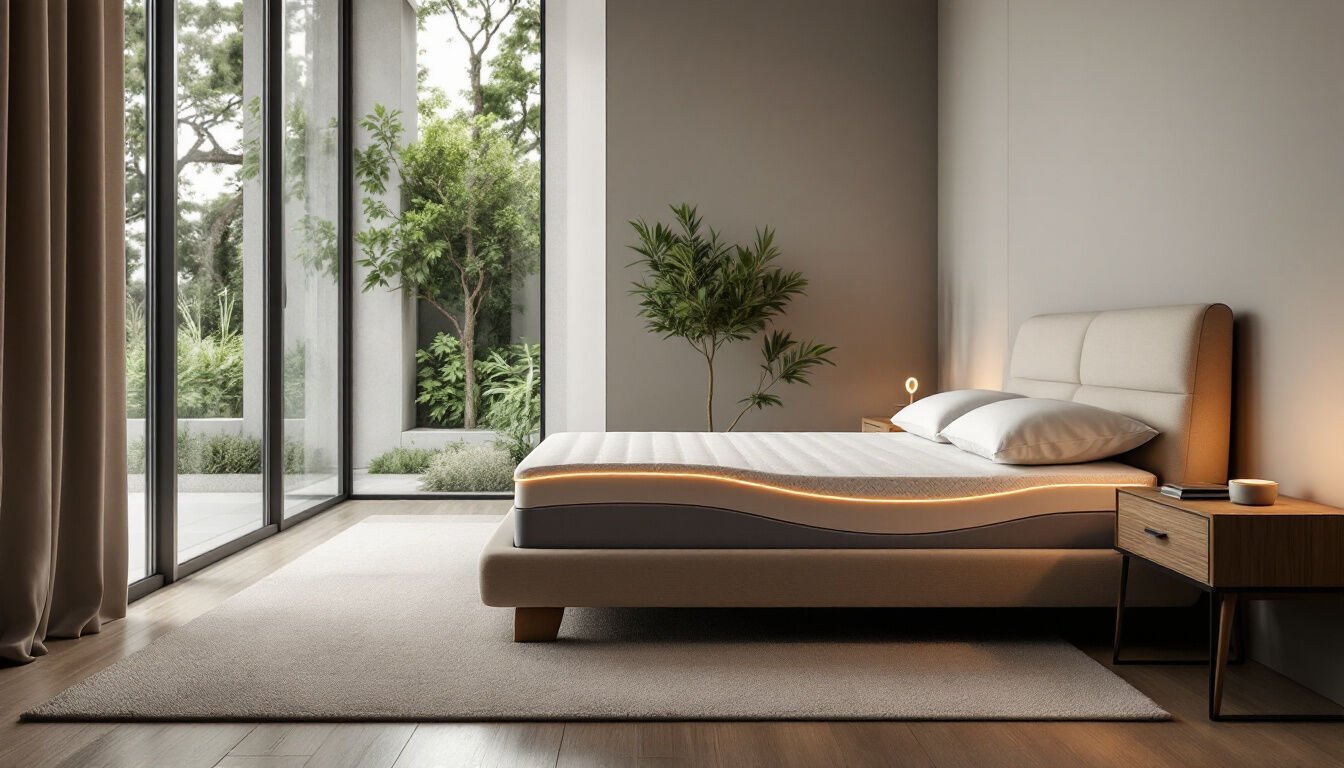Artificial Intelligence (AI) is revolutionizing interior design, changing how we visualize, plan, and decorate living spaces. From algorithm-driven room layouts to virtual reality walkthroughs, AI-powered tools are making interior designing simpler than ever – the global AI interior design market is expanding by over 20% every year and expected to generate billions-worth revenues within 10 years based on surveys with interior design enthusiasts who currently employ some form of AI within their design processes. Furthermore, one survey revealed that over 85% use some form of AI for their creative designs which opens up exciting potential personalized, efficient, yet innovative home decor solutions
This comprehensive guide explores how AI is revolutionizing interior design and home decor. You will explore market trends, the main drivers behind AI’s adoption, its cutting-edge technologies and applications in use today and what its future may hold for designers and homeowners. Furthermore, real life examples, tips for selecting an AI design software program as well as advice for using it effectively will also be shared to demonstrate just how fast this trend has taken hold in interior design projects today.
Market Growth
AI-powered interior design is experiencing significant market expansion throughout North America, Europe and Asia-Pacific – both professional designers as well as DIY homeowners are taking notice and adopting these smart tools for interior decoration projects.
AI allows for highly tailored interior designs by understanding individual preferences and lifestyle needs, providing custom furniture suggestions, color palettes and layouts tailored specifically for every user.
Improved Visualization
Thanks to advanced technologies like machine learning, 3D rendering and augmented reality, users are now able to instantly visualize rooms of various styles or configurations – eliminating guesswork and costly mistakes!
Efficiency & Savings
AI increases efficiency by automating repetitive tasks (like drawing floor plans or procuring materials). By doing so, designers are able to complete projects faster while homeowners avoid expensive trial-and-error processes.
Sustainable Living: AI tools help optimize energy use and recommend eco-friendly materials, making it simpler to design green interiors that save money and reduce waste.
Understanding the AI Interior Design Market

Market Size and Growth
Recent years have witnessed explosive growth for AI interior design services as technology has become an integral component of design services worldwide. Firms and tech companies alike have invested significantly in AI technology for interior design purposes – leading to remarkable annual compound annual growth rates of between 21-25% since 2023. Market analyses reveal that the global artificial intelligence interior design market was estimated at roughly $1.2 billion as of 2023 with CAGRs between 21-25% by 2032 as smart design software and AI-powered applications gain ground worldwide. By 2030 and beyond AI should become standard components in interior design processes for businesses as well as individuals alike!
Multiple factors account for this staggering growth. Accessible design apps and online platforms allow more people to experiment with home design digitally; while professional designers use AI as a competitive edge to meet client requests for faster turnaround times and immersive visualizations. As discussed later in this article, AI combined with related technologies like virtual reality or the Internet of Things also broadens the market scope. For a deeper dive into AI’s impact on the interior design market, check out this comprehensive market analysis.
Regional Trends and Segments
Artificial Intelligence in interior design has quickly become a global trend, yet adoption rates vary depending on where one lives. North America currently leads this sector accounting for roughly one-third of worldwide AI interior design spending. United States businesses and consumers tend to lead this field, where many pioneering design-tech firms and early adopters reside. Europe takes up about 30% of the market and prioritizes innovative sustainability features – an area in which AI tools that optimize space usage may prove particularly advantageous. Asia-Pacific region is currently one of the fastest-growing, thanks to rapid urbanization and tech-savvy populations eager to modernize their living environments. Countries such as China and India are home to growing middle-class populations who invest in AI-powered design apps and smart home devices for personalized decor solutions.
Artificial Intelligence in interior design spans multiple categories. Residential design applications of AI in this market segment are most prevalent, as homeowners use this tool to tailor living spaces according to individual tastes. People want their homes to reflect who they are, and AI-powered recommendations help make that possible. Commercial development such as offices, retail stores, and hospitality is also on the upswing. Businesses use AI to design work environments that promote productivity and enhance customer experiences – from office layouts designed with algorithmic precision to trendy cafes with algorithmic precision. Hospitals, hotels, and healthcare facilities alike are harnessing AI to craft inviting interior environments tailored specifically for user requirements (guests or patients). AI’s adaptable nature enables its use across any style or setting – it even adjusts itself according to individual guests’ or patients’ needs!
For a detailed analysis of AI’s market impact and future growth, read this industry report.
Core Drivers of AI Adoption in Interior Design
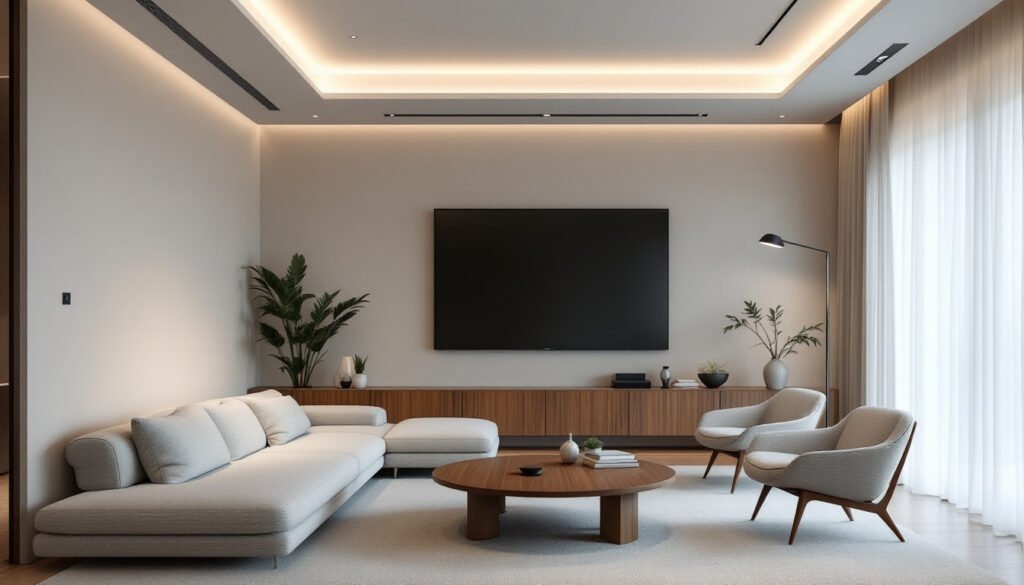
Why has AI been widely adopted in interior design? Multiple drivers behind its adoption have led to such widespread popularity; among these drivers are personalization needs, integration of smart home technology solutions, efficiency benefits, and cost reduction opportunities.
Personalization and Client Experience
AI dramatically boosts personalization by understanding an individual’s style preferences and needs. This technology can learn their favorite colors, furniture styles, and lifestyle requirements through data provided to it; then generate custom room designs tailored specifically for that profile. Thus the design process becomes client-centric; for example, if mid-century modern decor is your passion then this AI will incorporate these elements into the room plan to increase satisfaction and livability for every user.
Smart Home Integration
Modern smart homes incorporate Internet of Things devices like thermostats, smart lighting systems, and voice-activated appliances into the design seamlessly; AI interior design ensures these technologies don’t appear like awkward additions – for instance, an AI tool might place the thermostat (shown here) in an optimal and discreet spot, or suggest furniture placement which doesn’t interfere with sensors.
AI can coordinate smart features with design elements – lights that sync to daybreak or windows that maximize natural lighting for energy savings – to achieve a harmonious blend of style and convenience. As nearly 67% of U.S. households now contain at least some smart home features, seamlessly incorporating tech into design is becoming essential; AI makes this integration effortless.
Efficiency and Productivity
Efficiency is one of the primary draws to AI tools for designers. AI serves as digital assistants, automating time-consuming tasks quickly – such as creating multiple floor plan options or checking whether furniture fits within a layout – freeing designers up to focus on creative strategy while increasing productivity for projects finishing faster or small teams taking on additional work. AI expands designers’ abilities leading to quicker turnarounds and enhanced service provision.
Cost Savings
AI’s efficiency and accuracy equate to cost savings for designers and clients alike. Completing projects faster with fewer errors reduces labor and rework expenses for both sides, and by visualizing changes virtually AI is helping prevent expensive errors such as purchasing misfit furniture or last-minute construction changes. Many tools also include budgeting features for suggesting cheaper alternatives or tracking costs to stay on budget; according to one tech review AI design assistants help “cut down expenses and labor by providing realistic options upfront; smarter planning means making better use of every dollar!”
Breaking Down AI Technologies in Interior Design

Machine Learning and Design Algorithms
Most AI design platforms utilize machine learning technology to analyze large volumes of design data (floor plans, images, and user feedback). This enables the AI to recognize patterns that work effectively within any space – for instance recognizing which arrangements make a room feel larger or which color palettes suit certain styles – then apply that knowledge when you input preferences such as wanting coastal style decor in a small living room – drawing upon its learned knowledge to suggest tailored design solutions to match those criteria based on its learned knowledge based on past designs processed and user feedback processed over time – becoming smarter over time!
Natural Language Processing (NLP)
NLP technology empowers AI design assistants with the capability of understanding plain-language instructions, so you can simply tell an AI what you want (for instance “I have a small bedroom and love Japanese minimalist design with lots of storage”) and it will translate your style, needs, room size and needs into design ideas for you to generate instantly. Some tools even support voice command functionality so when asked “What can I do with this empty corner”, instant suggestions come pouring back instantly from them; with NLP as their partner in design, it becomes much simpler to engage creatively in creative pursuits!
3D Rendering and Visualization
AI excels at 3D visualization. Modern AI renderers can rapidly translate floor plans or sketches to photorealistic imagery or walkthroughs in minutes – which once required human designers several days or hours. You can experiment with changes (for instance different furniture pieces or colors), with AI rapidly updating scenes as necessary; this rapid visualization aids both designers and clients explore ideas quickly while understanding designs before anything physical is built – thus closing any rift between imagination and reality.
Augmented Reality (AR) and Virtual Reality (VR)
AI and AR work well together to enhance design visualization. AR allows you to place virtual furniture onto an actual room using your phone, so you can see exactly how new couches or tables would appear when placed there in real life – AI helps by scaling and placing items accurately, suggesting new pieces, suggesting how best to scale and place pieces, etc. VR lets users step through fully designed virtual models (such as a future kitchen) prior to being built; AI accelerates creation while providing quick changes during experience allowing clients and designers to explore design possibilities quickly in real-time allowing clients and designers alike experimentation so they know exactly what will result when finished product arrives! Together these technologies allow clients and designers alike to experiment with design options in real time so they know exactly what to expect when the final result arrives based on current experience alone!
Key Applications & Features of AI-Powered Interior Design
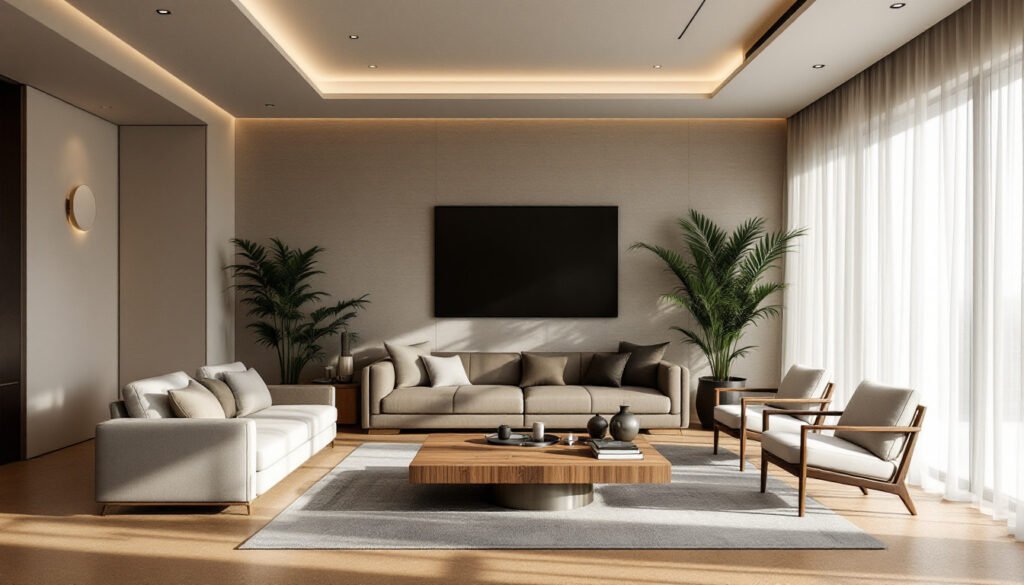
AI’s capabilities in interior design translate to an array of powerful applications and features that accelerate every stage of the design journey. Here are a few key ways AI is used in practice for better designs:
Room Layout and Space Planning
Artificial intelligence tools excel at producing optimal room layouts. By taking into account room dimensions and automatically placing furniture according to good design principles (like keeping pathways clear or balancing out the room), they are especially beneficial in difficult spaces or when trying out multiple layout options side-by-side. Space planning applications may account for most AI design uses since algorithms can analyze spatial data efficiently while suggesting effective designs that, people might overlook.
Design Style Recommendations
Unsure what your design style is? AI can assist in the identification and recommendation of styles. By analyzing images that catch your eye (Pinterest boards for instance) or conducting preference questions to understand your taste (modern, rustic or industrial for instance) it then suggests color schemes, furniture types, and decor items that fit each style (some apps even allow uploading photos for this feature!). Finally, it creates an itemized shopping list so you can achieve that look yourself!
Virtual Staging/Visualization
AI-powered interior design tools offer virtual staging/visualization features as a powerful way to reduce buyer remorse. Before investing in furniture or paint, homeowners can use AI apps like Virtual Room Staging to virtually place them into photos or 3D models of their room before making any commitments – an approach known as virtual “try before you buy.” You’re then able to see whether that giant sectional suits the space perfectly or how bold wallpaper could change its atmosphere before actually buying them – dramatically reducing buyer remorse or returns due to having seen what would happen!
Material and Color Selection
Finding materials (flooring, countertops, and fabrics) and colors that work can often be daunting for individuals. AI assistants make this easier by providing coordinated palettes and finishes; AIs make sure everything from walls colors and curtains to curtains and sofa fabric complement each other beautifully. Furthermore, eco-friendly options or budget concerns are taken into consideration with recommendations tailored towards eco-friendly or cost-cutting materials that work. Their knowledge base includes thousands of virtual models tested through virtualization software so the AI knows which combinations provide maximum durability, aesthetics, and mood!
Budgeting and Cost Estimation
Some advanced interior design platforms incorporate AI for cost estimation. As you plan your space and select furniture or materials, the software tallies up the projected costs in real-time; alerting if costs surpass budget or suggesting alternative products to save money if necessary – helping projects stay within their financial means and stay on schedule with finances. Furthermore, by accessing databases of product prices as well as construction costs the AI provides an accurate forecast as to the total implementation costs for your design ideas thus eliminating unpleasant surprises later.
Together, these AI-powered applications make interior design more approachable and simplified for everyone involved – not only experienced designers but anyone interested in improving their space can take advantage of these AI tools to transform what was once an intimidating process into an enjoyable, immersive experience.
AI for Sustainable & Eco-Friendly Interior Design
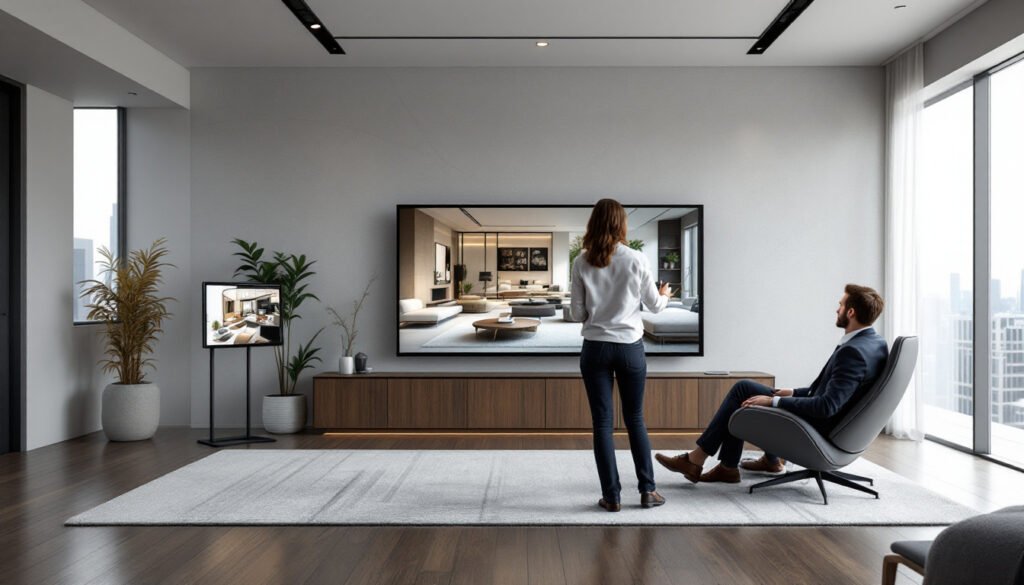
Sustainability in home decor has become an increasing priority, and AI is emerging as an invaluable ally in designing eco-friendly spaces. “Green” design often necessitates complex decision making involving energy efficiency, material sourcing and environmental impacts – an area in which AI excels by managing complexity while making data-driven decisions.
Optimizations in Energy Efficiency: Artificial intelligence can assess an area and find ways to enhance its energy profile. AI-powered design software might analyze sunlight patterns based on orientation and window size to recommend window treatments or smart glass that reduce heating/cooling needs. Furthermore, this kind of AI software could suggest where more insulation could be added or how better to position HVAC vents more effectively. Lighter colors that reflect more light or strategically placing mirrors can reduce artificial lighting needs; an AI will identify any opportunities. By taking AI suggestions into consideration for lighting, insulation and layout decisions homeowners could save 20-30% annually on energy bills, benefitting both their wallet and the planet over time.
Eco-Friendly Material Selection: Artificial intelligence excels at selecting eco-friendly materials. There are an increasing number of eco-conscious products on the market – such as recycled tile flooring and bamboo cabinetry – making it difficult for humans to stay abreast of them all. AI makes this task simpler. AI design tools may feature databases with sustainable materials and finishes that they highlight during project selection. If sustainability is a top priority for you, an AI may recommend sustainable flooring like cork or bamboo instead of hardwood to meet that goal. AI can also inform you which paint brands contain low levels of VOC emissions for improved indoor air quality, according to some analyses. Furthermore, using sustainable materials and efficient appliances has been found to cut home carbon footprint by up to 50% or more over time – AI helps by making those better choices more obvious during design processes.
Waste Reduction through Precision: Renovation and design often produce material waste – ordering too much flooring or having leftover paint, for instance – yet AI can reduce this waste through increased precision when creating floor plans or designing schemes; its algorithms can determine exact quantities needed. By eliminating overordering, this ensures you only purchase what’s necessary – saving both time and money with its reduction, while limiting excess materials heading directly into landfill. In fact, some tools optimize cut layouts (e.g. how to cut pieces of wood or fabric with minimal offcuts). According to one estimate AI can reduce construction and renovation waste up to 90% when compared with less planned projects, providing both efficiency gains as well as environmental benefit – an incredible victory both economically and ecologically!
AI-Powered Collaboration & Community Building
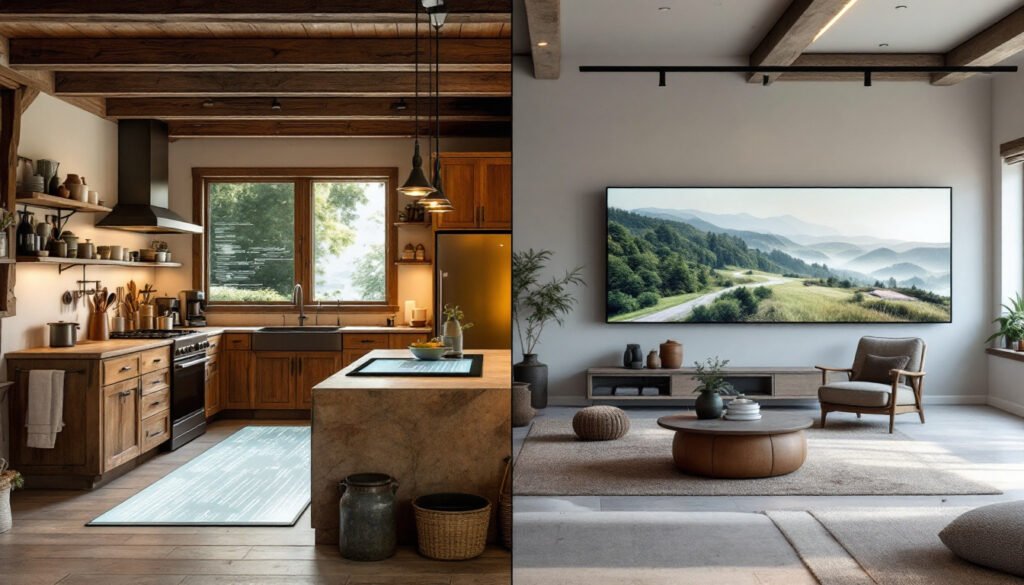
Interior design has always been a collaborative effort – between designers, clients, contractors, and other stakeholders. AI is enhancing collaboration by serving as a common platform and intelligent mediator among all parties involved. Here’s how:
Designer-Client Collaboration
AI tools help align designers and clients through visual communication. Instead of lengthy email exchanges or meetings trying to explain ideas, a designer can quickly produce AI-generated visuals to show the client: “Here’s one concept for your living room, and here’s an alternative with a different style.” The client, in turn, can use interactive AI apps to tweak things they don’t like – maybe changing a rug or moving a piece of furniture virtually. This back-and-forth, facilitated by AI, means both parties get on the same page faster. Miscommunications are reduced because the client can see and adjust the design in real-time. Think of it as a shared creative sandbox where AI is doing the heavy lifting of drawing and re-drawing the room as ideas evolve.
Team Collaboration
Within design firms, AI platforms (especially cloud-based ones) enable teams to work together on projects more fluidly. Multiple designers can log into an AI design portal and contribute to the same project simultaneously – one might work on the kitchen layout while another refines the bathroom design, for example. The AI keeps track of all changes and ensures the overall vision stays coherent. If one designer makes a structural change that affects other rooms, the AI can alert the team, ensuring nothing slips through the cracks. Moreover, AI can document choices and rationale, which is useful if a new team member joins the project; they can quickly get up to speed by reviewing the AI’s logs and suggestions so far.
Global and Remote Connections
Perhaps one of the most transformative aspects is that AI-powered design platforms break geographical barriers. A homeowner in one city can hire a designer from another country and effectively work together through a virtual design studio. AI translation (NLP again) can even help if they speak different languages, translating client requests in real-time. Virtual reality meetings inside a model of the house are now possible – designer and client can both “be” inside a virtual room discussing details, even if they are thousands of miles apart. This was hinted at earlier in the context of VR consultations: designers can present work in immersive virtual worlds, enabling real-time remote consultations. The result is a broader community where expertise and creative ideas flow without the limitation of location.
Community Design Platforms
Beyond one-on-one collaborations, AI is also enabling community-based design efforts. There are online platforms where design enthusiasts share AI-generated designs, exchange feedback, and even open their projects for others to contribute ideas. For instance, a user might upload their living room dimensions to a community and ask for suggestions; multiple people can propose designs using AI tools, and the best elements of each can be combined. AI can aggregate community feedback (e.g., identifying which style option most people liked for a particular project). This crowd-sourced approach, mediated by AI, empowers people to get diverse input and creativity they might not have access to on their own.
In essence, AI expands the collaborative spirit of interior design. It helps ensure everyone’s voice is heard and accurately represented in the design, and it connects people across professional and social communities to collectively push creative boundaries. By doing so, AI not only changes how we design but also how we interact and learn from each other in the realm of home decor.
AI in Different Interior Design Styles & Settings

Adapting to Various Design Aesthetics
AI’s greatest strength lies in its adaptability. No matter if your aim is for rustic farmhouse kitchen decor or sleek contemporary living room decor, AI recognizes and adjusts suggestions accordingly based on each aesthetic’s key components – colors, materials, and decor pieces should match whatever “rules” of style chosen; or AI can blend styles (such as mixing mid-century with Scandinavian touches to produce unique looks) until reaching your ideal theme or combination of themes you require for final design.
Tailoring to Different Spaces and Uses
Interior design requirements depend on the setting in which they will be utilized – be it home, office, store, or hotel – AI understands these context differences and adjusts accordingly; at home for instance AI may recommend more comfortable layouts or furniture solutions that save space than in offices for example. AI can prioritize factors like traffic flow, brand aesthetics, and durability of materials in offices or retail environments. It can simulate how people will move through restaurants or work together at offices; and then use that insight to inform design choices. AI designs don’t only aim to look beautiful – they must serve the intended function of each room within your house as well. Even within one house, AI recognizes different treatments are necessary for rooms such as kitchens (functional layout, easy-to-clean surfaces) versus bedrooms (calm colors and privacy). Thanks to contextual awareness technology’s designs aren’t simply beautiful – they serve their intended function effectively!
Market Segmentation & Industry Impact
Segmentation by User Type: In the marketplace of AI interior design solutions, we can identify distinct user groups:
- Professional Interior Designers: Design firms increasingly integrate AI to generate ideas, create quick renderings, and manage projects more efficiently. AI has become a competitive tool that boosts productivity and enhances creative offerings for these professionals.
- Furniture and Decor Retailers: Retail companies have jumped on AI to boost sales through better visualization. Many furniture websites now have AI-driven “room planner” features where customers can drag and drop products into a virtual room. Some even have AR apps for seeing items in your home through your phone camera. These businesses use AI as a try-before-you-buy tool, helping customers visualize products and gathering data on preferences to inform future offerings.
- Homeowners and DIY Decorators: AI has opened up interior design to everyone. Homeowners can use easy apps (often free) to visualize makeovers, try virtual furniture placement, and even stage their home for sale. In effect, AI serves as a personal interior designer in your pocket, guiding you through design decisions without requiring formal training.
Changes in the Design Industry: With AI in the mix, interior designers are evolving their skill sets and roles. Today’s designers are expected to be proficient with AI tools, and design schools have started teaching these technologies. Rather than replacing designers, AI is changing them into curators and strategists who guide smart software. This has even given rise to new opportunities – from specialized AI design consultants to more accessible services for clients on a budget. However, the human element remains critical: designers still provide the creative vision and personal touch that ensures an AI-generated design truly resonates with the client.
Real-Life Applications & Success Stories
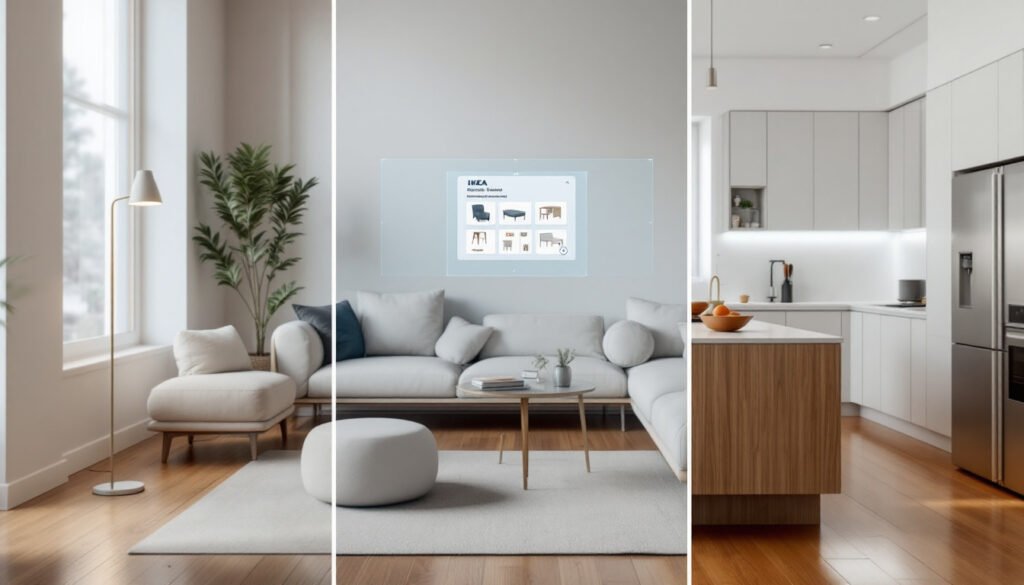
IKEA’s AI-Powered Design Tool: A leading furniture retailer, IKEA has embraced AI to help customers design their spaces. In 2024, IKEA launched IKEA Kreativ, an AI-driven interior design tool that lets users scan their room with a smartphone and then experiment with IKEA furniture in a lifelike 3D replica of that space. Essentially, it creates a “digital twin” of your room and allows you to remove your existing furniture (virtually) and try new items. This tool features lifelike spatial computation – meaning it can understand your room’s dimensions and lighting – to ensure the 3D showroom experience is accurate. The result? Customers can play interior designer at home, avoiding guesswork before making a purchase. IKEA reported that this not only improves customer confidence but also speeds up decision-making and increases satisfaction, as people end up with furniture that truly fits their room and style.
Residential Remodel with AI: One homeowner used an AI design app provided by her contractor to reimagine an outdated kitchen. After she input her kitchen’s dimensions and style preferences, the AI generated several layout options with different cabinetry, appliance arrangements, and color schemes. She chose her favorite concept (which even included a clever storage feature she hadn’t considered). Because she could visualize everything and tweak choices in advance, the renovation went smoothly with no surprise changes. The project finished on time and under budget, illustrating how AI can make home remodels more predictable and satisfying.
Virtual Staging in Real Estate: Real estate professionals have found a sweet spot for AI in interior design with virtual staging. One success story involves a real estate agent with an empty property listing that was struggling to attract buyers. Empty rooms often make it hard for buyers to envision living there. The agent used an AI virtual staging service: by uploading photos of the vacant rooms, the AI furnished them digitally with stylish decor targeted to the likely buyer demographic in that area. Within a day, the listing photos were transformed – a barren living room now looked like a cozy, modern entertainment space, the empty bedroom became a serene retreat. Interest in the property surged after the updated images were posted, and the home sold above asking price. Buyers even commented on how helpful it was to see the space’s potential. The agent saved thousands of dollars and weeks of time compared to traditional staging, all thanks to AI-generated interiors that looked completely real.
These examples scratch the surface, but they underline a common theme: AI in interior design is producing tangible improvements. Whether it’s a global retailer using it to enhance customer experience, a homeowner getting a dream kitchen, or an agent making a sale, AI-driven design approaches are delivering results that traditional methods struggled to achieve as efficiently. They show that AI isn’t just about flashy tech – it’s a practical tool making a positive impact on outcomes and experiences in the world of interior design.
AI’s Future in Interior Design
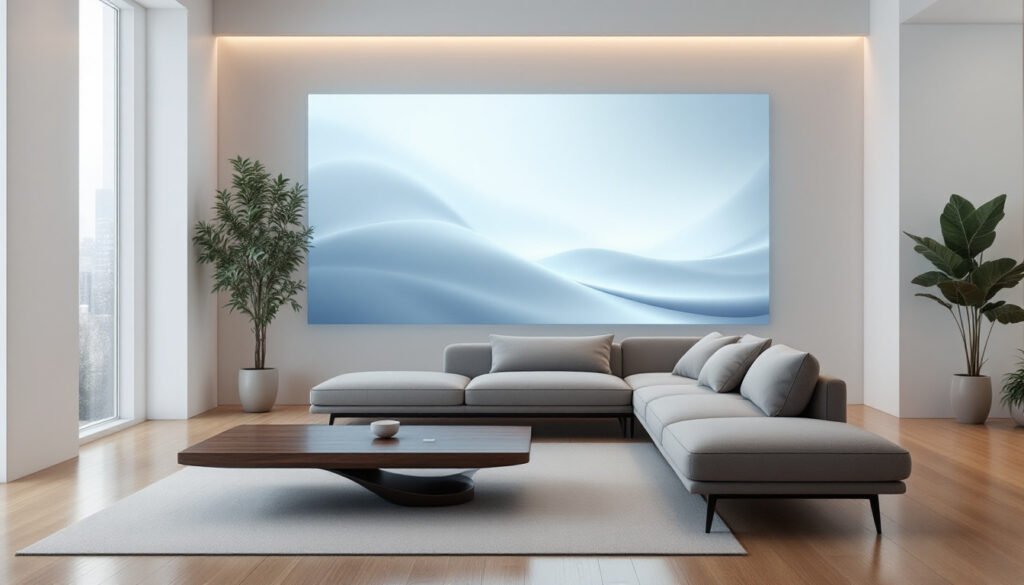
Looking ahead, the relationship between AI and interior design is set to deepen. Several trends and considerations suggest that we are only at the early stages of this technology’s influence on how we design our spaces:
Greater Personalization Through AI: In the future, AI might know you better than you know yourself (at least in terms of design preferences). As smart homes collect more data on how we live – when we entertain, what moods we have at home during different times of day, which areas of the house we use most – AI could leverage this to create ultra-personalized spaces. Imagine an AI that notices you always gravitate to a particular armchair in the evening; a future AI designer might suggest reorienting the room to make that spot even cozier, or to place a reading light there. If an AI observes that you host movie nights frequently, it could proactively recommend a home theater setup during your next redesign. This anticipatory design capability would make interiors highly responsive to individual lifestyles.
AI as a Creative Partner (Not a Replacement): A big question is whether AI will replace human designers. The consensus emerging is that it won’t replace them, but designers who harness AI will replace those who don’t. In other words, AI is set to become an even more integral partner in the creative process. We can expect AI to handle more of the heavy lifting in technical aspects (measurements, code compliance checks, etc.), freeing human designers to focus on creativity, storytelling, and client relationships. The balance might shift – designers spending perhaps 30% of their time instructing and supervising AI tools and 70% on the nuanced decisions and personal touches that machines can’t replicate. Essentially, interior designers will act as directors, with AI as the savvy assistant doing the backstage work.
New Job Roles and Opportunities: As AI becomes embedded in interior design, new career paths are likely to emerge. We might see specialized “AI interior design consultants” who are experts in various AI platforms and help integrate them into large design projects. There could be roles like “Design Data Analyst” where one analyzes user data and AI-generated insights to inform big design decisions for retail chains or hospitality franchises. Moreover, the increased efficiency from AI could make interior design services accessible to a wider audience (through lower costs or DIY tools), thus expanding the market and actually creating more jobs to meet the demand of previously untapped customer bases who want professional guidance.
Ethical and Creative Challenges: The future will also bring important discussions about ethics and authenticity in design. With AI generating designs, issues of originality may arise – will homes start looking too similar if everyone uses the same algorithms? Designers will need to ensure a human touch that keeps designs unique and meaningful. There’s also the matter of data privacy: AI design tools that learn from user behavior need to handle that data responsibly. Ensuring that personal preferences and home layouts (potentially sensitive information) are kept secure will be paramount. Transparency in how AI makes decisions (to avoid any inadvertent biases, say in recommending expensive options disproportionately) will also be important so that clients trust the AI’s suggestions.
In summary, the future of AI in interior design holds a world of exciting possibilities. The common thread is that interiors will become smarter, more tailored to individuals, and potentially more dynamic. Through all these changes, the human element – our creativity, our emotional connection to spaces – remains irreplaceable. AI will provide incredible tools and insights, but it will be human designers and homeowners who decide how to best use them to craft the places we call home.
Choosing the Right AI Interior Design Software

With an ever-growing list of AI interior design tools available, choosing the right one can feel overwhelming. The “best” software largely depends on your specific needs – whether you’re a professional designer, a hobbyist decorator, or a homeowner planning renovations. Here are some top AI-powered interior design tools and what they offer, to help you make an informed decision:
- Planner 5D: Known for its user-friendly interface, Planner 5D is great for both professionals and beginners. It allows you to create detailed 2D and 3D floor plans and then furnish and decorate them. Its AI features, like a Design Generator and Smart Wizard, can auto-generate layouts and decor suggestions based on your input. It also supports VR walkthroughs. Ideal for homeowners and designers who want a quick, easy way to visualize spaces with a huge library of furniture.
- RoomSketcher: RoomSketcher is another popular tool that helps you draw floor plans and see them in 3D. While it’s not heavy on automatic AI design suggestions, it’s very handy for creating accurate layouts and then using its basic AI to furnish the rooms. It’s web-based and tablet-friendly, making it accessible anywhere. Good for real estate professionals or anyone needing to mock up room designs to scale.
- Foyr Neo: Foyr Neo is an advanced AI tool for home design that combines the power of artificial intelligence, virtual reality and augmented reality. It’s known for allowing users to generate high-quality 3D renders in minutes. Designers can start from a 2D plan, and Foyr Neo will help turn it into a fully decorated 3D scene with minimal effort. It’s ideal for interior designers who need client-ready visuals fast.
- Homestyler: Originally developed by Autodesk, Homestyler is a popular AI interior design tool catering to professionals and homeowners. The platform provides an extensive 3D model library (including real furniture products) and even offers augmented reality features. Its AI auto-furnish function can populate a room with a balanced furniture layout at the click of a button. Both novices and seasoned designers appreciate Homestyler for producing photorealistic images without requiring advanced CAD skills.
- DecorMatters: DecorMatters is a user-friendly AI-powered interior design app that provides a seamless experience for design enthusiasts. The app offers AR capabilities: you can take a photo of your room and virtually try new furniture or decor. It also gamifies design with community challenges and a feed where users share their AI-created designs. DecorMatters is best for casual use – it’s a fun way to play with design ideas on your phone and get inspiration.
When choosing software, consider the following tips:
- Define Your Purpose: Are you visualizing a one-time room makeover for yourself, or will you use this tool regularly in a professional capacity? The former might only need a free or low-cost app, while the latter justifies investing in a more robust platform.
- Check Platform Compatibility: Some tools are cloud-based or have mobile apps (great for accessibility), while others might be installed on a PC/Mac. Ensure the tool you pick works on your devices.
- Library and Output Quality: Look at the variety of furniture and materials in the software’s library (especially if you want specific brands or items). Also, check examples of its rendering quality – higher realism helps for client presentations or personal visualization.
- Ease of Use vs. Features: More advanced tools can do amazing things but might have a learning curve. If you’re not a tech-savvy person, a simpler interface like Planner 5D or a mobile app might serve you better than, say, a professional CAD-based AI tool.
- Community and Support: It’s often useful if the software has an active user community or lots of tutorials. That way, you can learn tricks, see how others use it, and get help when needed.
Actionable Tips for Incorporating AI in Interior Design
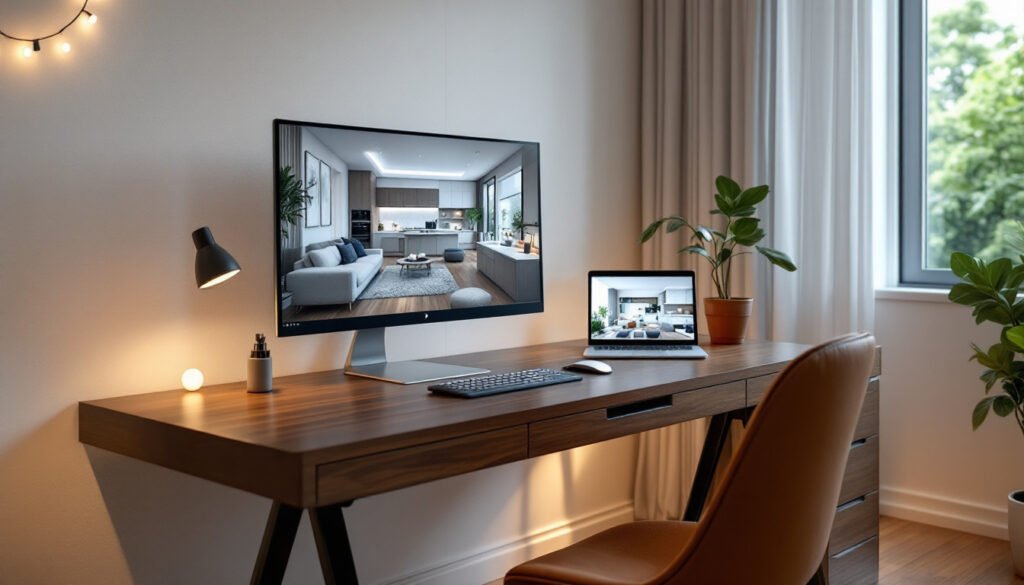
Excited about using AI for your next interior design project? Here are some practical tips to help you make the most of these smart tools, whether you’re a professional or a DIY decorator:
- Start Small and Experiment: If you’re new to AI design, begin with a single room or a simple project. Try out a free app or an online room planner to get a feel for how it works. Experiment with different features – generate a layout, change colors, swap furniture – to see the capabilities. This low-stakes practice will build your confidence in trusting AI suggestions.
- Be Clear About Your Goals: Before feeding anything into an AI tool, clarify what you’re aiming for. Is it a particular style, a space-saving solution, a budget limit? AI is great at problem-solving when you give it clear directives. For example, telling the tool “maximize seating in my living room” or “find a coastal style color scheme” will yield more focused results than a vague request.
- Provide Accurate Inputs: AI outputs are only as good as the information you provide. Ensure you input accurate room dimensions, and if possible, photos or current layouts. When describing preferences, be as specific as you can (“I like blue and green tones, Scandinavian furniture, and lots of natural light”). The more detail the AI has, the better it can tailor the design to your needs.
- Iterate with Feedback: Think of using AI as an interactive process, not a one-and-done step. When the AI gives you a design suggestion, don’t hesitate to tweak it. Almost all platforms allow you to refine results – maybe you lock in a layout you like and ask the AI to try a different color scheme, or you love the furniture but want alternative lighting options. Use the AI’s ability to iterate quickly to your advantage.
- Combine AI Insights with Human Touch: AI might suggest layouts or pieces you hadn’t considered, but you should still run them through your own sense of comfort and style. For instance, an AI might propose a very trendy-looking chair that fits the design, but you know you prefer a plush armchair for reading – trust your instincts and modify accordingly. The best results come when you blend AI’s smart ideas with your personal or professional judgment. Use AI as a guide, not an absolute decision-maker.
- Mind the Limitations: Remember that AI, while powerful, doesn’t know you or your space as intimately as you do. Always double-check practical details. Ensure measurements are correct before making purchases the AI recommended. Check that the beautiful design the AI created doesn’t accidentally block an air vent or a doorway. Basically, use AI’s suggestions as a strong starting point, then apply a final layer of real-world sensibility to finalize the design.
By following these tips, you can harness the potential of AI without any headaches. The technology is there to make designing easier and more fun, so dive in with a playful yet critical mindset. You’ll likely find that AI can unlock ideas and efficiencies that will forever change the way you approach interior design for the better.
Conclusion
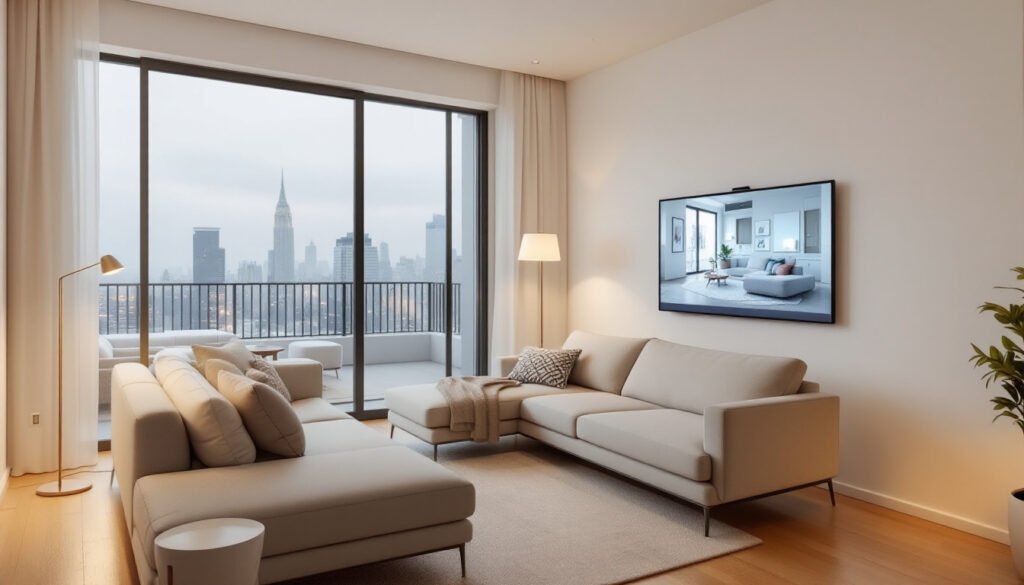
Artificial intelligence is undeniably revolutionizing home decor and interior design. From speeding up tedious tasks to unlocking creative possibilities, AI acts as a catalyst that amplifies what designers and homeowners can achieve. It allows for highly personalized spaces, ultra-realistic visualizations, smarter planning, and even eco-friendlier designs. As we’ve explored throughout this article, the synergy of human creativity and machine intelligence is producing interiors that are both beautiful and functional in ways we could barely imagine just a decade ago.
The key takeaway is that AI is a tool – a very powerful one – but the heart of interior design remains human. Your vision, values, and personal style drive the process; AI simply helps bring those elements to life more efficiently and imaginatively. Whether you’re a seasoned interior designer looking to innovate or someone setting up your first apartment, embracing AI can offer fresh inspiration and confidence in your design choices. The learning curve is small and the access is easier than ever, so it’s an opportunity open to all.
Ready to transform your space with the help of AI? Now is a great time to explore an AI interior design tool or two and experience the difference for yourself. Try visualizing a new decor scheme for your living room using a free app, or if you’re planning a renovation, consider consulting with a design service that uses AI for an ultra-collaborative experience. You might be surprised at how quickly you can go from an idea to a concrete plan with these smart technologies by your side.
AI is transforming the way we design and decorate our homes, offering efficiency, creativity, and personalization like never before. Ready to integrate AI into your home decor? Discover expert tips and design ideas on ChatbiHouse or check out our guide on how AI is changing smart home automation. Stay ahead of the trends and elevate your space with smart technology!
Frequently Asked Questions (FAQ)
A: AI is a powerful aid for interior designers but not a replacement for human creativity and expertise. While AI can generate ideas, layouts, and even complete designs based on data, it lacks the intuition and emotional understanding that human designers bring. The best outcomes are achieved when designers use AI as a tool to enhance their work – for example, to save time or explore more options – rather than expecting the AI to do the entire job. In essence, AI handles the heavy lifting and technical details, allowing interior designers to focus on the creative and personal aspects that require a human touch.
A: AI interior design tools use algorithms and machine learning to analyze user inputs (like room dimensions, style preferences, or photos) and then generate design recommendations. They compare inputs against vast databases of design data and learned patterns to suggest layouts, color schemes, furniture arrangements, and more. Some utilize augmented reality or virtual reality to let users visualize changes in their actual space. Essentially, these tools mimic the decision process of a designer by using data-driven insights to create interior design solutions that users can further refine.
A: There are several popular AI-driven design platforms catering to different needs. For instance, Planner 5D and Homestyler are well-known for their rich features and large libraries of furniture, letting users create detailed 3D designs. RoomSketcher is widely used for drawing floor plans and basic AI furnishing. For quick AI-generated room makeovers, apps like DecorMatters or web tools like Interior AI (which can virtually redecorate a photo of your room) are trending. Professional designers might use Foyr Neo for fast rendering or even incorporate features of Autodesk software that include AI enhancements. The landscape is always evolving, but these names come up frequently when talking about AI in interior design.
A: Not at all – in fact, many AI interior design tools are free or have free versions for consumers. Mobile apps aimed at homeowners often use a freemium model (basic features free, advanced features or premium content for a fee). Even for paid software, the cost is generally much lower than hiring a traditional interior designer for full services. For professionals, investing in a subscription to a high-end AI design platform can quickly pay off by increasing efficiency and allowing them to handle more projects. Moreover, by helping prevent costly mistakes (like incorrect furniture sizes or mismatched materials), AI can actually save users money during the design process. It’s a cost-effective way to get design guidance and detailed plans without the full expense of trial-and-error or solely human-led design iterations.
A: Getting started with AI for home decor is easy and fun. Begin by identifying an area or room you’d like to redesign or experiment with. Then, choose a user-friendly AI design app or online tool – for example, Planner 5D, Homestyler, or even something like the IKEA Kreativ tool if you’re focusing on furniture placement. Take measurements or use your phone to scan the room if the app allows it. Next, input your style preferences or pick from suggested styles. Let the AI generate some designs for you. Don’t be afraid to play around: adjust the layout, swap colors or furniture, and see the changes instantly. You can do this on your own time, at your own pace. Many people start by virtually decorating a room to test ideas before making any physical changes. It’s a low-risk way to explore design possibilities. As you get comfortable, you can use AI insights to guide real-world purchases and renovations. Essentially, just dive in and treat it like a design game – you’ll quickly pick up on how intuitive and helpful these AI tools can be in creating a space you love.

